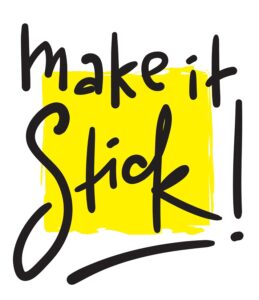AS HUMANS, WE DON’T TAKE WELL TO CHANGE
There are 3 main reasons why we resist.
1. Change interrupts the way our brain works. Our brains develop pathways (sometimes referred to as muscle memory) as a way of reducing the number of calories it has to burn. Yes, thinking can produce smoke that comes out of one’s ears – lol. In our daily lives, this is what is characterized as habits. Most of us have had the experience of driving home and not remembering the drive. This is a great illustration of how a habit works. It reduces our need for conscious thought. Most of our actions are driven by habit so when you ask someone to change they find it difficult and subconsciously want to resist.
2. Change is inconvenient. From an employee’s perspective, they have mastered an existing process or technology to the degree that they can focus on doing their job, which is where they get a key source of satisfaction. Change is viewed as a setback because the employee must relearn the landscape of a new environment, new process or new software. Therefore, this change becomes a source of temporary frustration.
3. Change has a degree of uncertainty, fear or anxiety. Remember your first day at College after leaving the comfort of high school or starting a new job. Our past experiences shape how we accept the future. Those with deep scares from past changes may exhibit the most reluctance to future changes. When a person has lived through a history of changes where the outcomes have not been well executed or the change has had a negative impact on their lives their tolerance for change is low.
So what are the Steps to tackling this challenge?
 First step: Learn how habits work. Behavioral science shows us that you can’t eliminate a habit, but rather you replace it with a new habit. Understand how habits are formed so you know how best to instill new ones. I recommend you read “The Power of Habits” to expand your change management toolset.
First step: Learn how habits work. Behavioral science shows us that you can’t eliminate a habit, but rather you replace it with a new habit. Understand how habits are formed so you know how best to instill new ones. I recommend you read “The Power of Habits” to expand your change management toolset.
.
Second step: Make the learning experience relevant, easy, and convenient. Microlearning is a great methodology to use when combined with a simple reward/recognition outcome. It is also important to understand how the brain receives and recalls information so you can avoid a problem referred to by psychologists as “memory decay.” Studies on memory decay demonstrate that we forget 70-90% of what we are taught within a few short weeks. I recommend that you read the book Make it Stick.
Microlearning is a great methodology to use when combined with a simple reward/recognition outcome. It is also important to understand how the brain receives and recalls information so you can avoid a problem referred to by psychologists as “memory decay.” Studies on memory decay demonstrate that we forget 70-90% of what we are taught within a few short weeks. I recommend that you read the book Make it Stick.
.
 Third step: Listen to employees to understand their experience with change. One-on-one “listening interviews” with some employees can help you to understand their past experiences and pre-conceived anxieties. This is the most difficult to overcome as it requires more personal engagement and a long-term strategy. With a long-term view, you can start to reshape people’s aversion to change.
Third step: Listen to employees to understand their experience with change. One-on-one “listening interviews” with some employees can help you to understand their past experiences and pre-conceived anxieties. This is the most difficult to overcome as it requires more personal engagement and a long-term strategy. With a long-term view, you can start to reshape people’s aversion to change.
Most employees are faced with smaller, less strategic changes every year. Whether it’s a new form, a software update, or a new printer, each one is a chance to create a positive experience to change. So don’t overlook these seemingly less important opportunities to reshape behavior. Positive experiences will help to create more receptive responses to the bigger changes.
For years as a manager, and later as CEO, I have felt the pain of introducing change to an organization. Having done a poor job for many of those years, I saw first-hand the lost opportunities and later the success that comes from knowing how to do it better. Feel free to contact me if you would like to dive deeper into ways of improving the change process.
Find out more about the Challenges that CEO’s Face When Accelerating Change. Download the Buyer’s Guide for FASTER Change Adoption Now.

